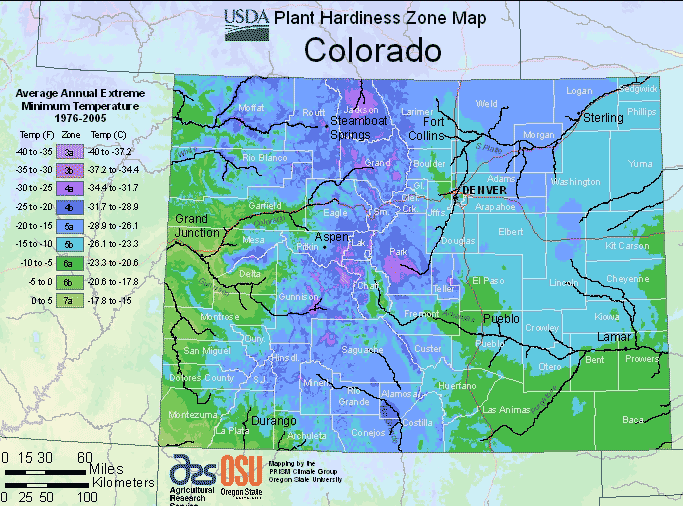Gardening at altitude in the high desert and mountains of Colorado presents a unique set of challenges and there are some things you’ll want to know before you head to the garden center this spring.
First, know is your hardiness zone. Generally if you are in Cortez or Dolores you are in a Zone 5. Rico and Telluride are in a Zone 4. Mancos is also a Zone 4 in most places. However, microclimates exist in any yard that can complicate matters. Microclimates are small areas where the climate can be different than the rest of the space and this is often delineated by walls, rocks, fences, or trees and can exist within any landscape. For instance, at our house, we have a south facing stucco wall that creates a microclimate that is warmer than the rest of the property since the stucco holds the heat and keeps it warmer at night. Small dips in your landscape can create their own microclimates too as they tend to collect cooler air as it settles. Knowing your zone and where these microclimates are is important because in order to be successful, you’ll want to select plants that are suited for that space.
Know your elevation or altitude. The temperature drops an average of 3.5 degrees F for every 1,000 feet you gain in elevation. That means that gardening on the far north side of Dolores, will be much different than gardening on the south side of town, even though technically they are in the same zone. Temperatures there will stay below freezing later in the spring and will begin to freeze earlier in the fall so shorter season choices, or plants that like cooler temps will be more appropriate choices for that location.
The soils in our area are notorious for being poor, so spend some time getting to know what you’ve got and how best to amend it. Adding products like Back to Earth, compost, peat moss, or other organic amendments to a depth of 6″ will greatly improve your chances of success.
The other thing that you’ll need to be aware of, particularly if you are new to the area, is the fact that we live in a virtual wildlife habitat and as such, the plants that look great to you will also be attractive to our wildlife friends, especially deer. While nothing is “deer proof,” there are plants that are less appealing so be sure to ask for their recommendations where ever you plan to purchase. There are also repellant products available that are quite good at keeping unwanted critters at bay. We like Bonide’s Repels All, but there are others like Plantskydd and Liquid Fence that work well too. If you are installing new raised beds, take the time to put hardware cloth or wire mesh down first to keep out burrowing animals like voles, moles and pocket gophers.
You can cheat Mother Nature by keeping a few tricks up your sleeve. If you live in a place where success will depend on controlling the temperatures, consider keeping row cover, frost protectors, tunnels, or cloches handy to protect gardens. Even in the summer, nighttime temperatures can drop drastically so keeping protective coverings available is always a good idea. Consider planting your garden in raised beds or containers. They’re not only easier on your back but the soil in them tends to warm up more quickly in the spring, providing a longer growing period. In addition, containers can be moved indoors or to a covered porch for added protection.
Personally, I love gardening here. Yes, there are some challenges, but I’ll take the high, dry climate here over the heat and humidity I grew up with on the East Coast any day. When I harvest that first crop of vegetables or cut the first bouquet of summer flowers, the rewards make all the challenges worthwhile.

